Exploring The Conflict Between Over-Simplified Design and Diverse Community Needs in Small Parks in Queens, New York
Introduction
This report examines the conflict between simplified design and diverse community needs in small parks along the 7 Line in Queens, New York. GIS and data research analyze spatial patterns and characteristics of small parks in Queens and demographic data from surrounding areas. We want to discover that Queens’ many small parks are designed with a simplistic, generic approach that may not adequately reflect the diverse needs and identities of the surrounding communities.

Our research anticipates several key findings.
First, Queens’ smaller parks are disproportionately located in low-income and minority neighborhoods, which may reflect a lack of investment and interest from the city government.
Second, there is a significant mismatch between the demographic characteristics of the surrounding neighborhoods and the design characteristics of small-scale parks, such as playgrounds and sports facilities, that need to meet the needs and interests of residents.
Finally, lacking public investment and community involvement in designing and maintaining smaller parks can worsen a conflict between simplified design and diverse community needs.
To start, we would like to use one of the small parks as an example to illustrate:

Data Source: Google Maps(2023)[map locating 90th St-Elmhurst Ave Station]

Data Source: Google Maps(2023)[map locating 90th St-Elmhurst Ave Station]

Data Source: Google Maps(2023)[map locating 90th St-Elmhurst Ave Station]
Just like this small park, there are many others alongside the 7 Line in Queens, suffering the same fate of generalization and monotonous design while being situated in culturally, socially and economically diverse neighborhoods.

Data Source: Google Maps(2023)[map locating 90th St-Elmhurst Ave Station]
Research Questions and Hypotheses: The research questions and hypotheses are essential components of the study that guide the research process and inform the methodology. For example, the following research questions and hypotheses conduct this study on the conflict between simplified design and diverse community needs in small parks in Queens, New York:
How do the spatial patterns and characteristics of small parks in Queens reflect the needs and identities of the surrounding communities? Hypothesis: The current design of small parks in Queens needs to be more complex and adequately reflect the diverse needs and identities of the surrounding communities.
How does simplified design impact community well-being and social cohesion in small parks in Queens? Hypothesis: Simplified design limits the use and enjoyment of public spaces and can contribute to social exclusion and a lack of community cohesion.
What policy and design recommendations can be made to promote the creation of public spaces that are inclusive and responsive to the needs of diverse communities in Queens? Hypothesis: Policy and design recommendations that prioritize community engagement, cultural sensitivity, and the promotion of social cohesion can help create public spaces that are more inclusive and responsive to the needs of diverse communities.
These research questions and hypotheses will guide the methodology, including analyzing spatial patterns and demographic data, case studies, and community engagement activities. By addressing these research questions and hypotheses, the analysis can provide a comprehensive understanding of the conflict between simplified design and diverse community needs in small parks in Queens and offer policy and design recommendations that promote the creation of public spaces that are inclusive and responsive to the needs of diverse communities.
Methodology
The method behind our research is guided by the two forces behinds the management and ownership of these parks: the New York City Parks and Recreation Department and the local community. For each of these park, we are looking at its government and governance, both quantitatively and qualitatively. From mapping out capital project investments done by Parks and Recs in Queens to different languages spoken by people living in Queens. The projects attempts to extrapolate and put into form the culture at each of these parks or the lack-thereof.
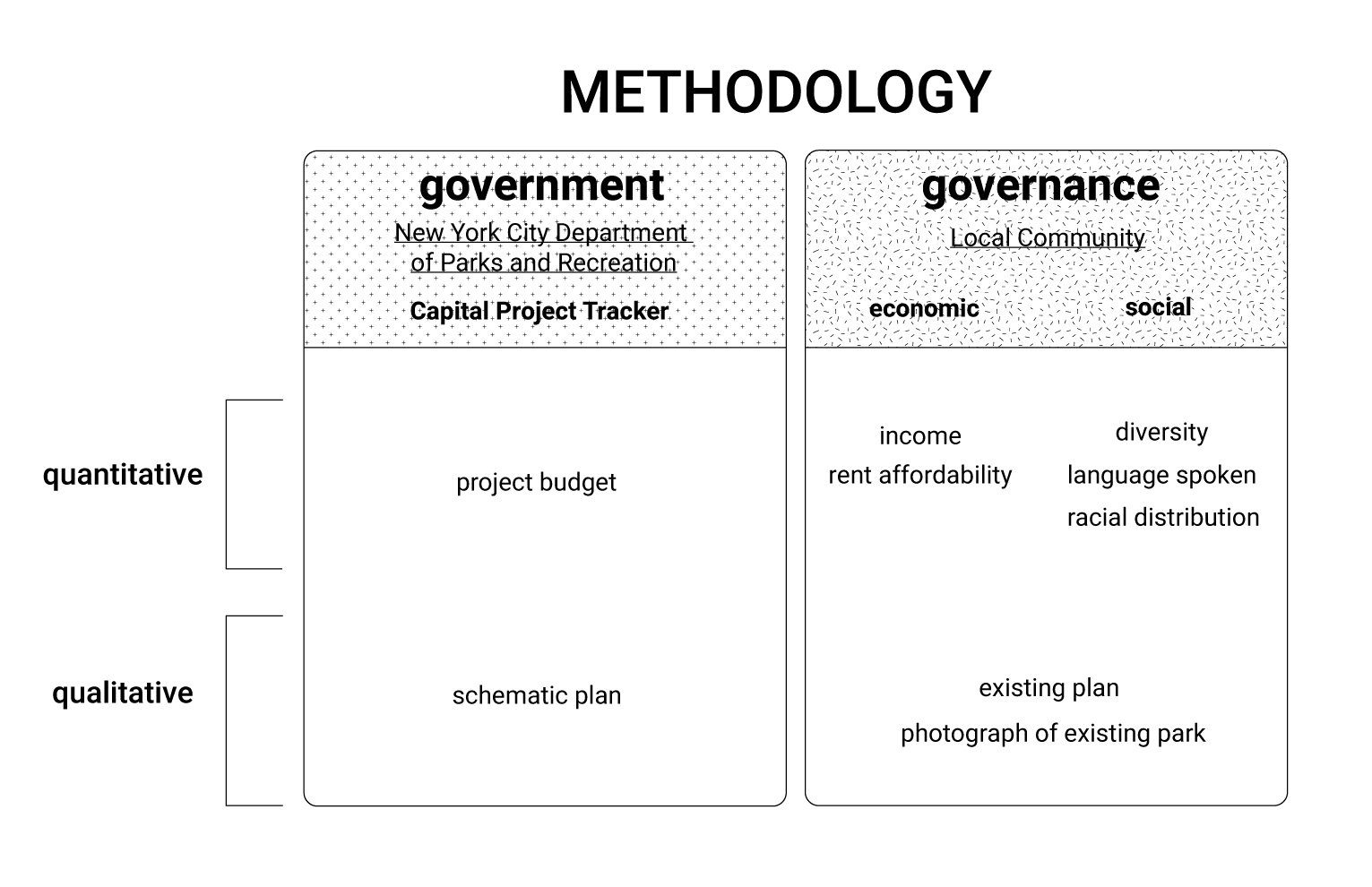
Data Sources and Collection: Data sources and collection methods, including GIS and data research, are described.
GIS and Spatial Analysis: Describes GIS and spatial analysis methods that use spatial data and analysis tools to explore spatial patterns and characteristics of small parks in Queens.
Statistical Analysis and Visualization Tools: Describes statistical analysis and visualization tools used to analyze demographic data from surrounding areas and visualize the results.
Case Studies: Design sample
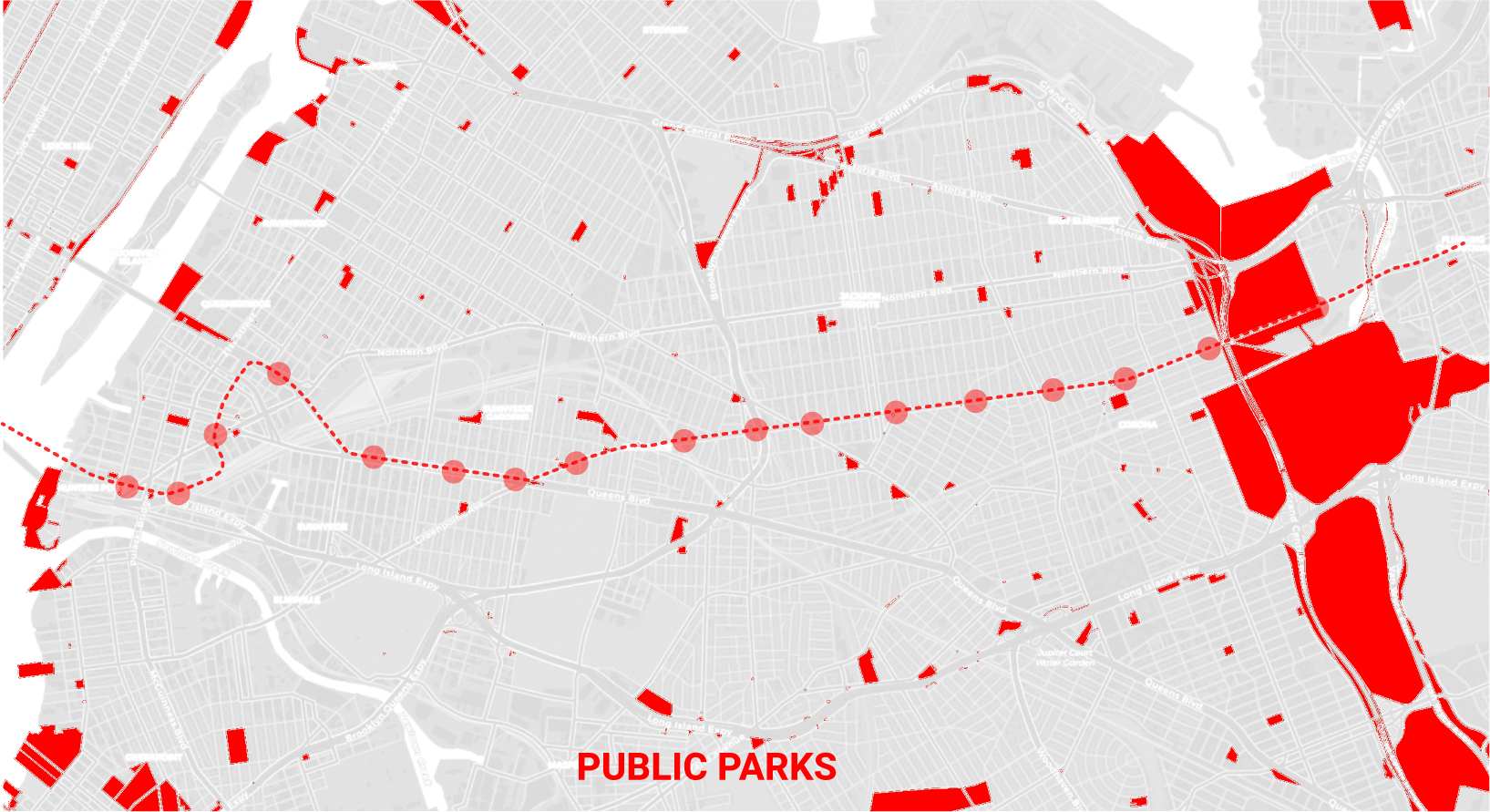
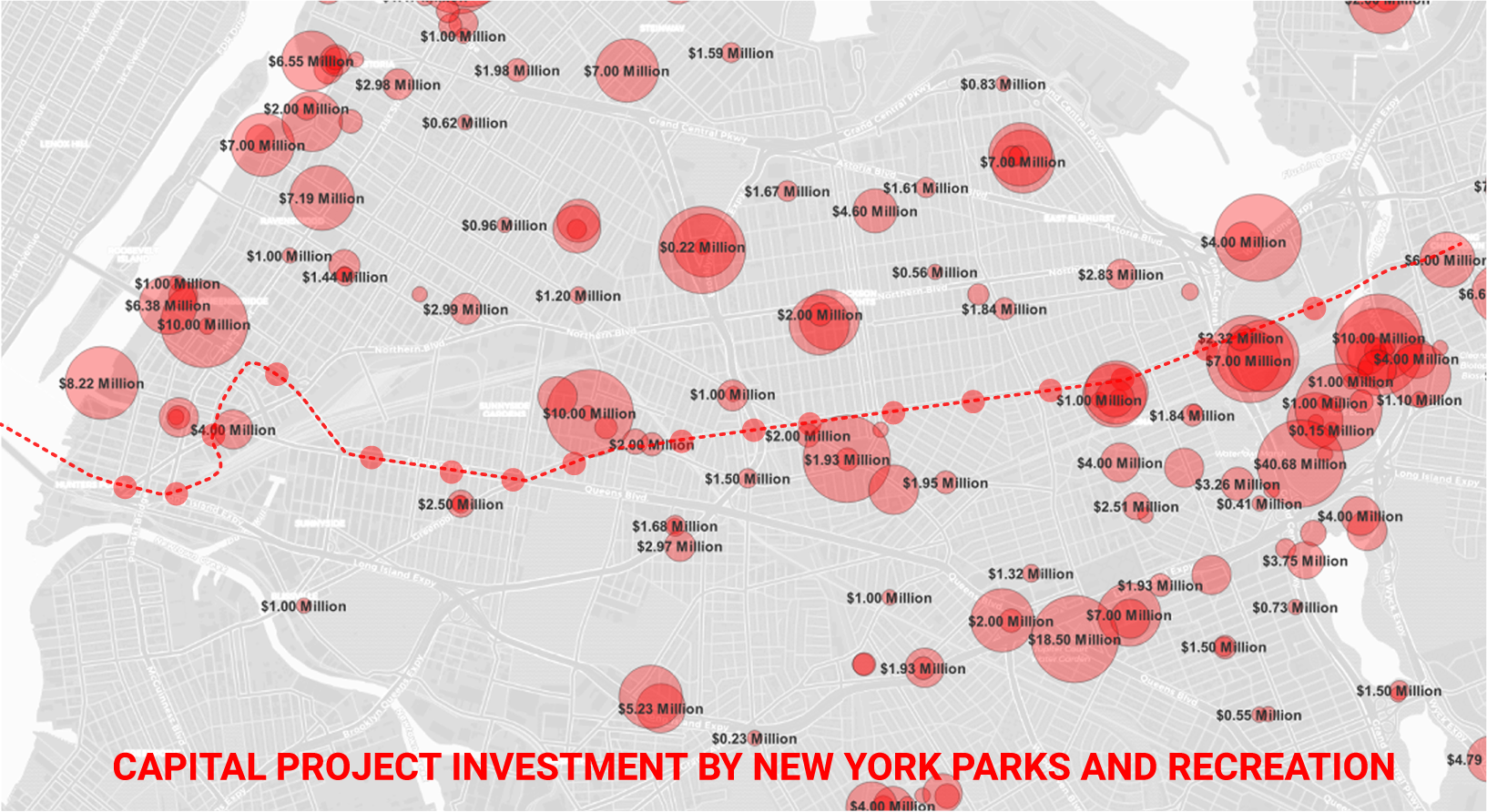
According to the New York City Parks and Recreation Department Capital Project Tracker
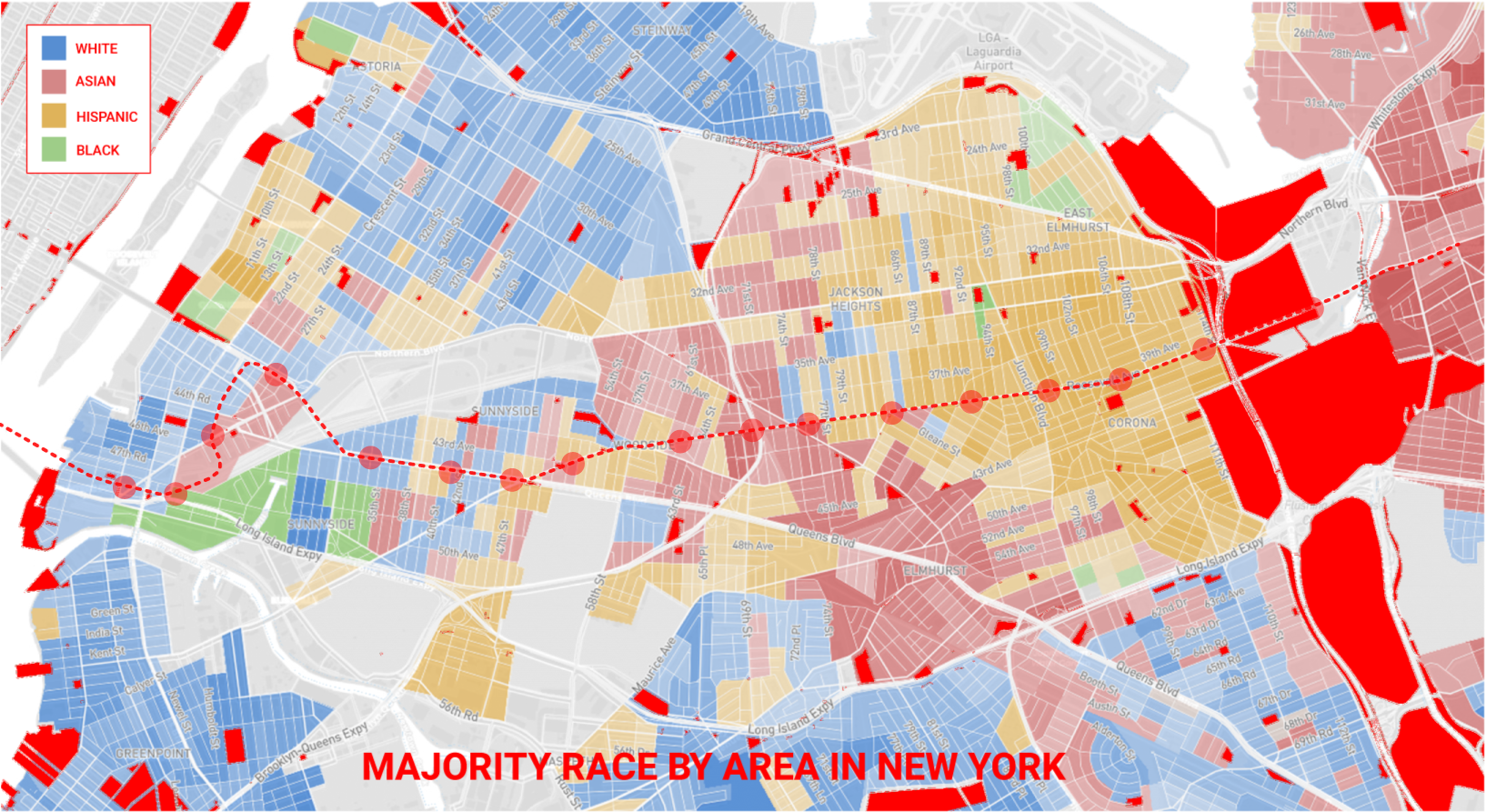
Data Source: Best Neighborhood (2023)[Race, Diversity, and Ethnicity in New York, NY]
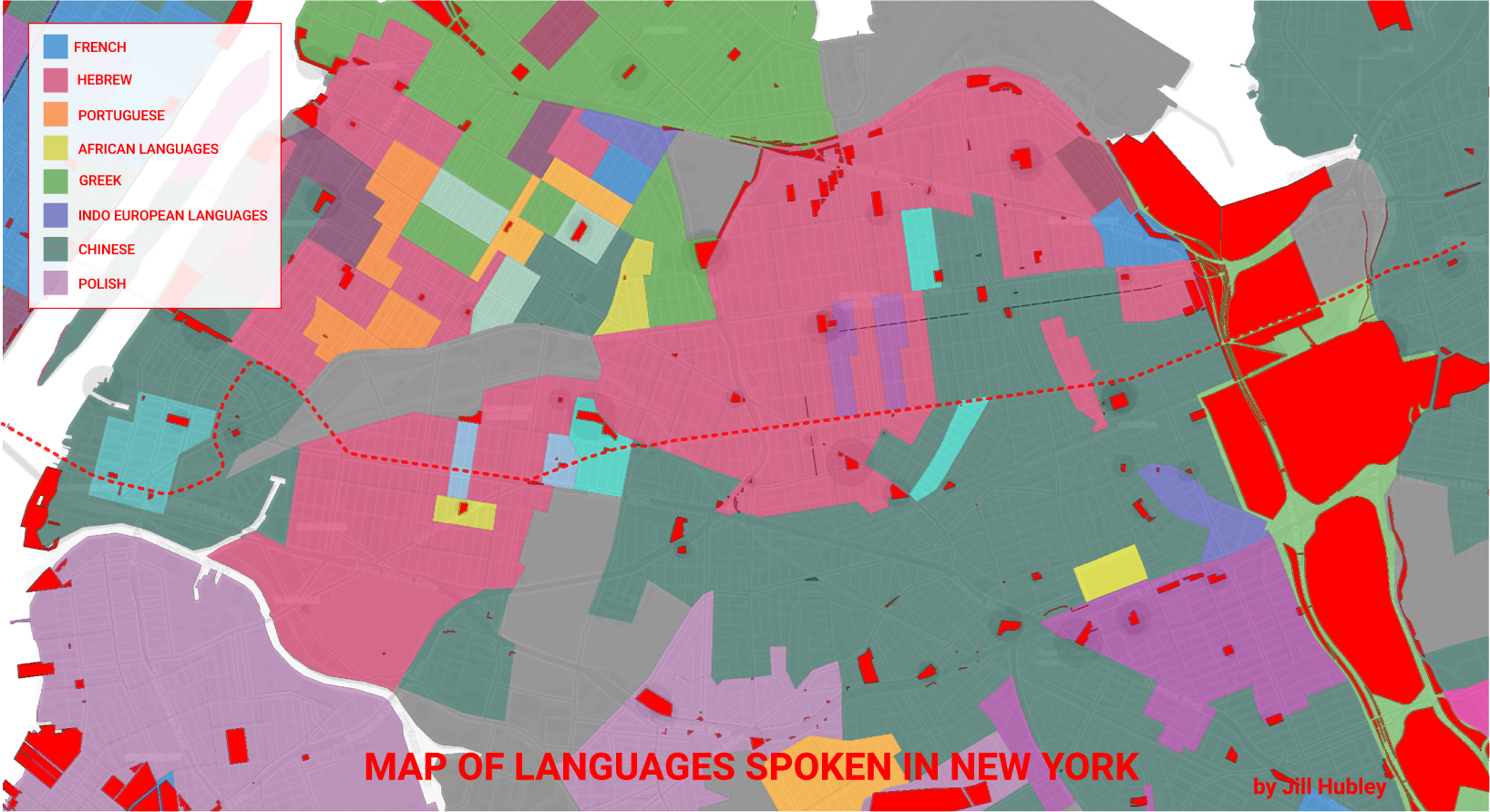
Data Source: Jill Hubley (2023)[Most Frequently Spoken Language at Home, Excluding English and Spanish, by Census Tract]
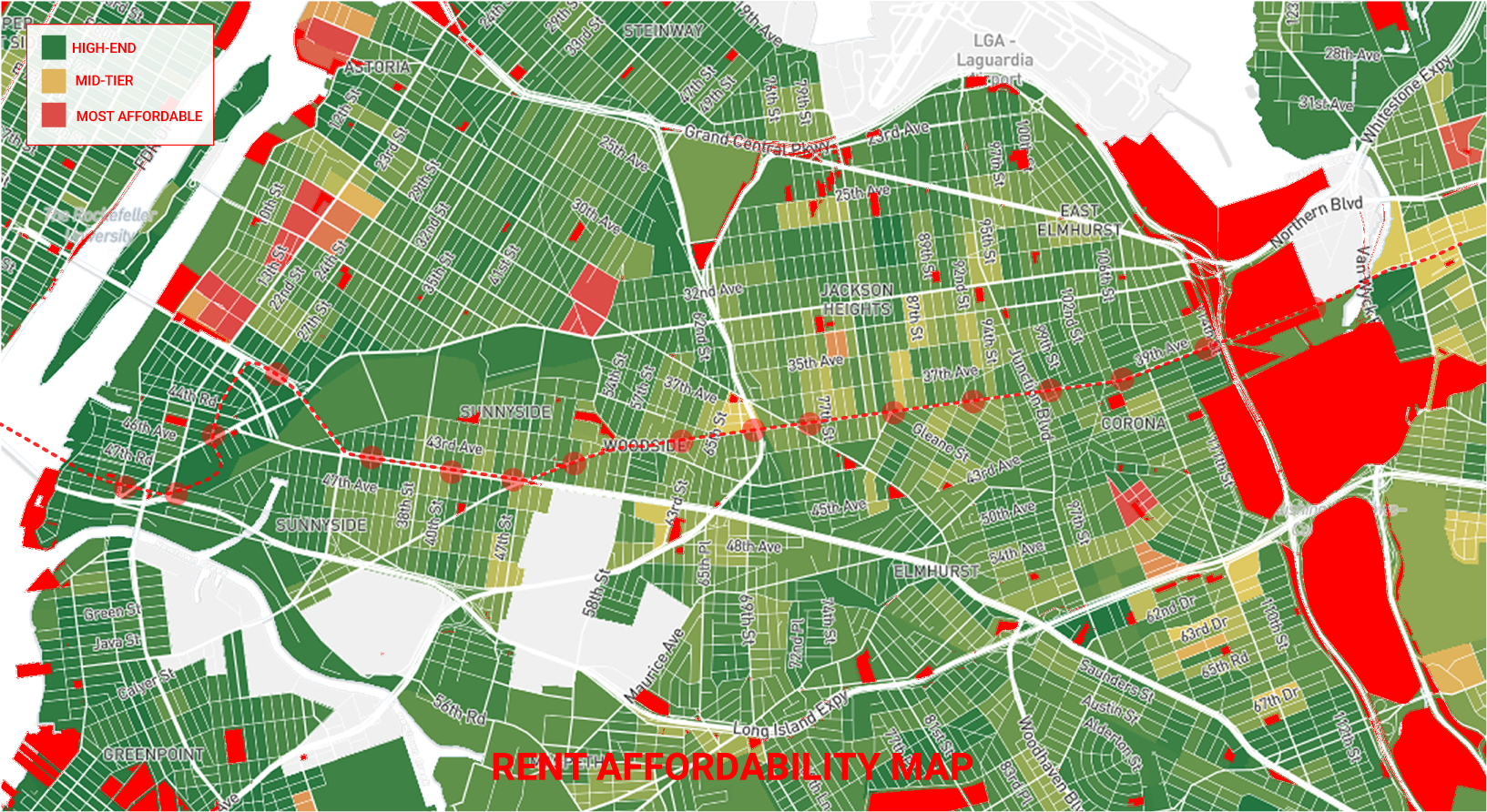
Data Source: Best Neighborhood (2023)[The Most and Least Expensive Areas to Rent in New York, NY]

Data Source: Best Neighborhood (2023)[Diversity Score]

Data Source: Best Neighborhood (2023)[The Highest and Lowest Income Areas in New York, NY]
Conclusion:
We recommend several policy and design interventions to address these issues. First, city governments must increase investment and interest in small parks in low-income and minority neighborhoods and prioritize public engagement and community involvement in the design and maintenance process. Second, the design of the small park should be more responsive to the demographics and cultural identity of the surrounding community and incorporate a variety of amenities and facilities that meet the needs and interests of residents.